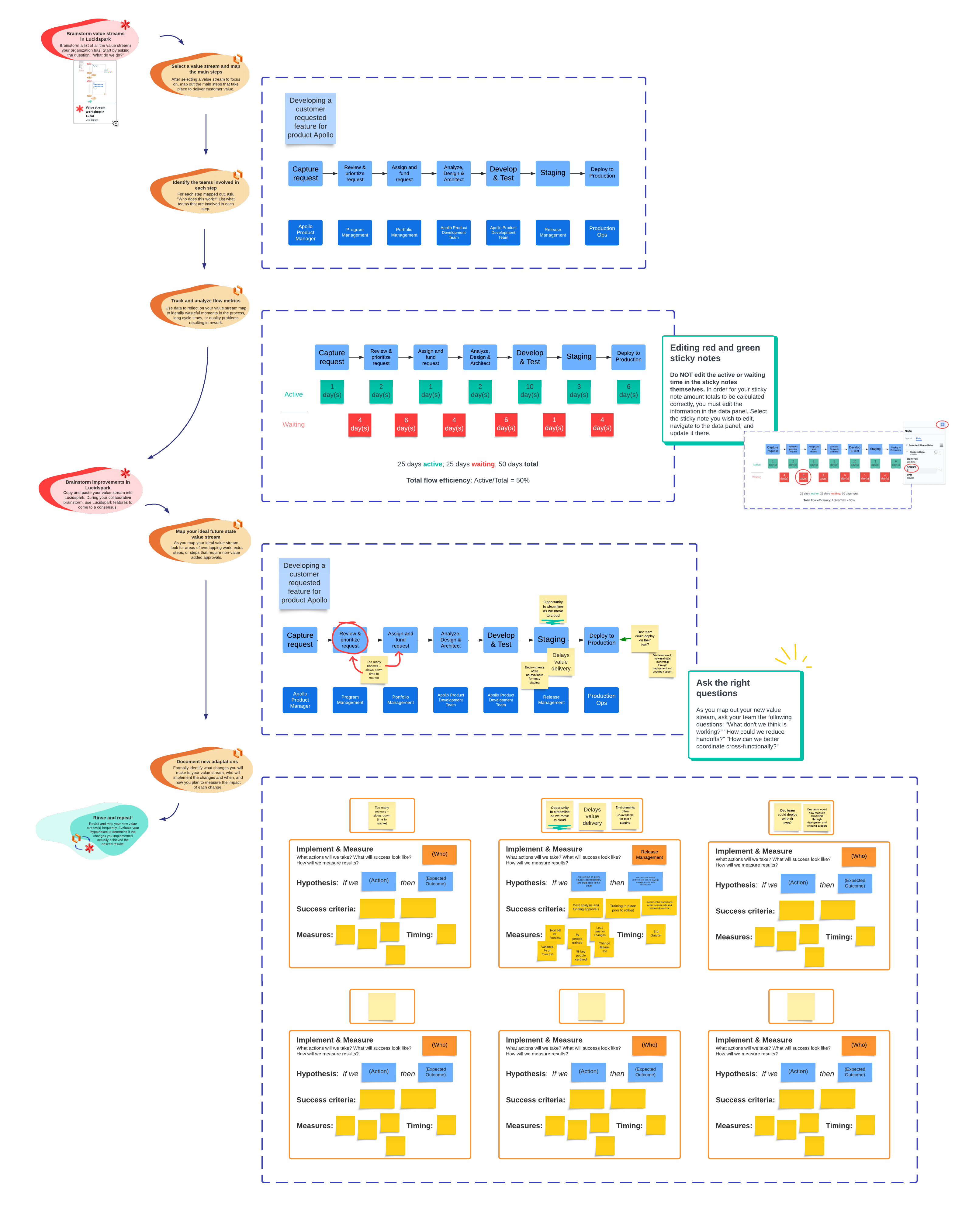
A guide to achieving organizational alignment
Reading time: about 7 min
Topics:
Our latest research shows that while 93% of executives say they’re confident in project and deliverable expectations, only 74% of individual contributors agree. This misalignment extends to final deliverables, with only 33% of respondents reporting they fully understand what final project outputs should look like.
In such a competitive market, recognizing where misalignment is happening and taking steps to remedy it can give your org the edge it needs to be successful.
A McKinsey article explains.
“Achieving real alignment, where strategy, goals, and meaningful purpose reinforce each other, gives an organization a major advantage because it has a clearer sense of what to do at any given time, and it can trust people to move in the right direction. The result is an organization that can focus less on deciding what to do—and more on simply doing.”
Here are a few additional stats to consider from LSA research:
- 68% of companies with low organizational alignment reported poor levels of employee engagement.
- 30% of low-alignment organizations indicated unsatisfied customers, while 97% of high-alignment organizations indicated satisfied customers.
- Highly aligned organizations increase revenue 58% faster and are 72% more profitable than unaligned organizations.
Organizational alignment best practices
Though achieving organizational alignment in the era of hybrid work may seem difficult, it’s absolutely possible. Consider these best practices to get there.
Understand your value streams
A value stream is a sequence of activities a team or organization takes to deliver value to a customer or respond to a customer need. For example, you may realize that you could make steps to increase deployment frequency or automate manual processes. Perhaps you recognize an opportunity to combine tasks to simplify a certain step so you can deliver it faster.
Value stream management is a great place to start boosting alignment because once leaders identify and focus on a common goal, teams can follow suit, boosting alignment overall.

Explore our step-by-step guide to value stream management.
Check it outTo understand value streams, try value stream mapping. Analyze the value stream flow metrics and identify improvement areas. Once you’ve mapped out an improved value system blueprint, you can move forward intentionally on strategies and projects, better focusing your team members and org in general.

Prioritize transparency and communication
When we mention transparency here, we’re specifically talking about internal, organizational transparency—the systems companies implement that allow employees to communicate openly, access important information and context, and make data-backed decisions.
Research has found that transparency is a crucial element of alignment. In fact, research from The Org discovered that 73% of employees felt their work life would improve with added transparency.
But, keep in mind, even when upper management feels they’ve conveyed organizational goals, that vision may not trickle down as efficiently as management expects. Research from 451 Research found that while 71% of C-suite and business owners really understand specific organizational goals, only 54% of senior leaders, 44% of middle managers, and 39% of those in non-managerial roles feel the same.
The power of visuals shouldn’t be underestimated in this process of transparency. According to Dan Lawyer, CPO at Lucid:
“Visuals are an effective way for leaders of any org to capitalize on the changing workplace and turn the difficulties of a hybrid workforce into strengths—inspiring teams of all kinds to collaborate and communicate better, make decisions faster, and build the future.”
Communication may seem like a basic tip, but fostering a culture of thoughtful communication is vital to improving organizational alignment. The larger your business is, the harder it is to communicate and align individuals, so a large part of achieving organizational alignment is maintaining updated, accessible documentation.
Centralize resources
Amidst a whirlwind of transformation for today’s businesses, centralizing company resources emerges as a crucial tactic to anchor teams in a unified direction. Having access to resources is great—but only if they’re housed within a centralized hub accessible to all stakeholders. A single source of truth that teams can draw from eliminates confusion and increases alignment—especially when teams themselves are dispersed and working from different locations geographically.
Choosing a dynamic repository like Lucid also promotes living documentation, or documentation that is ever-evolving and is always relevant and up-to-date. Your documentation should evolve as often as your decisions and projects do, and organically creating documentation as you go (rather than creating it as a separate step) saves you time and effort, and in turn, makes it far more valuable to you.
Team hubs in Lucid are a perfect place to serve as a hub of documentation for your org. They can become your team’s virtual home base, bringing together the resources that teams need to initiate work, coordinate progress, and stay aligned from start to finish. You can centralize messaging communication, create a document repository, and launch into your work in a single, unified space for teams of all kinds.
Ditch the decision-making silos
Silo mentality traditionally seeps into teams and workplaces when individuals develop a sense of isolation. It’s usually seen as a top-down issue where management may feel competitive, distrusting, or reluctant to connect and share with other departments. Those attitudes are then passed down to teams and individuals, which can foster many problems, including intensified competition, increased inefficiencies, responsibility confusion, a lack of vision, reduced accountability, and more.
The same happens when decisions are made without input or consideration from other departments or stakeholders. To maximize trust and alignment, it’s not enough to know what decisions were made—your team needs to know how you arrived at your decisions.
Making and documenting decisions and priorities in a shared space is essential to increase trust, promote transparency, and in turn, boost alignment.
Visual Activities are a great place to start. These are interactive activities that help teams initially align on priorities while intrinsically documenting how the decision was reached along the way. An infinite brainstorming space can also be crucial for this step, as you can get down your thoughts and discussions, hold a voting session, and link out to additional context—all while organically leaving that ever-important documentation trail to refer back to.

Explore tools and techniques to make better business decisions.
Go nowInvest in the right tools
Too much of something isn’t necessarily a good thing, and that’s especially the case when it comes to tech stacks.
If you’re like other orgs, the rapid transition to remote work inspired the adoption of a variety of tools in the name of maintaining communication and productivity. The problem? Too many tools can create information silos. Instead, bring cross-functional teams together on the same platform to foster alignment.
Lucid is the only visual collaboration solution that supports teams across their entire workflow, from ideation to execution—and that means a consolidated tech stack. In fact, on average, Lucid replaces two tools for an average customer.
Lucid offers features that make collaborating (and aligning) easier. For example, universal canvas streamlines your workflow by allowing you to seamlessly leverage the full power of the Lucid Suite. Swap between Lucidchart, our intelligent diagramming application, and Lucidspark, our virtual whiteboard application, at the click of a button, saving you time and connecting your most important work.
Plus, our many integrations can consolidate your workflow even further by bringing the work you’ve done elsewhere directly into Lucid, or vice versa.
You’ll want to consider other types of tools too. Messaging apps like Slack and Microsoft Teams can ensure your communication stays in one place and is easy to refer back to. And video conferencing applications, like Zoom, allow your team to work face to face even if your team spans the globe.
In today’s fiercely competitive landscape, organizational alignment is more crucial than ever. Understanding and optimizing value streams, prioritizing transparency and communication, centralizing resources, breaking down decision-making silos, and investing in the right tools can all contribute to that alignment. As the working landscape continues to evolve, these practices will remain not only valuable, but critical to thrive.

Find out how our enterprise plans can help your team maximize alignment and productivity.
Contact usAbout Lucid
Lucid Software is the leader in visual collaboration and work acceleration, helping teams see and build the future by turning ideas into reality. Its products include the Lucid Visual Collaboration Suite (Lucidchart and Lucidspark) and airfocus. The Lucid Visual Collaboration Suite, combined with powerful accelerators for business agility, cloud, and process transformation, empowers organizations to streamline work, foster alignment, and drive business transformation at scale. airfocus, an AI-powered product management and roadmapping platform, extends these capabilities by helping teams prioritize work, define product strategy, and align execution with business goals. The most used work acceleration platform by the Fortune 500, Lucid's solutions are trusted by more than 100 million users across enterprises worldwide, including Google, GE, and NBC Universal. Lucid partners with leaders such as Google, Atlassian, and Microsoft, and has received numerous awards for its products, growth, and workplace culture.
Related articles
Bridging the alignment gap: Survey uncovers key factors affecting organizational productivity
37% of workers believe team alignment can be improved in their organizations. See other results from our alignment survey.
The warning signs and risks of poor organizational alignment
Achieving organizational alignment requires recognizing the risks and warning signs of misalignment and taking steps to enable cross-functional alignment.
Stop breaking down silos and start connecting them
It's time to change the conversation to focus on bridging silos and creating open lines of communication and collaboration between teams. Here's how to connect silos across teams and organizations.
3 pain points engineers face and how to overcome them with visual collaboration
We’ll share three pain points that engineering teams face and how Lucid offers lasting solutions to eliminate them.